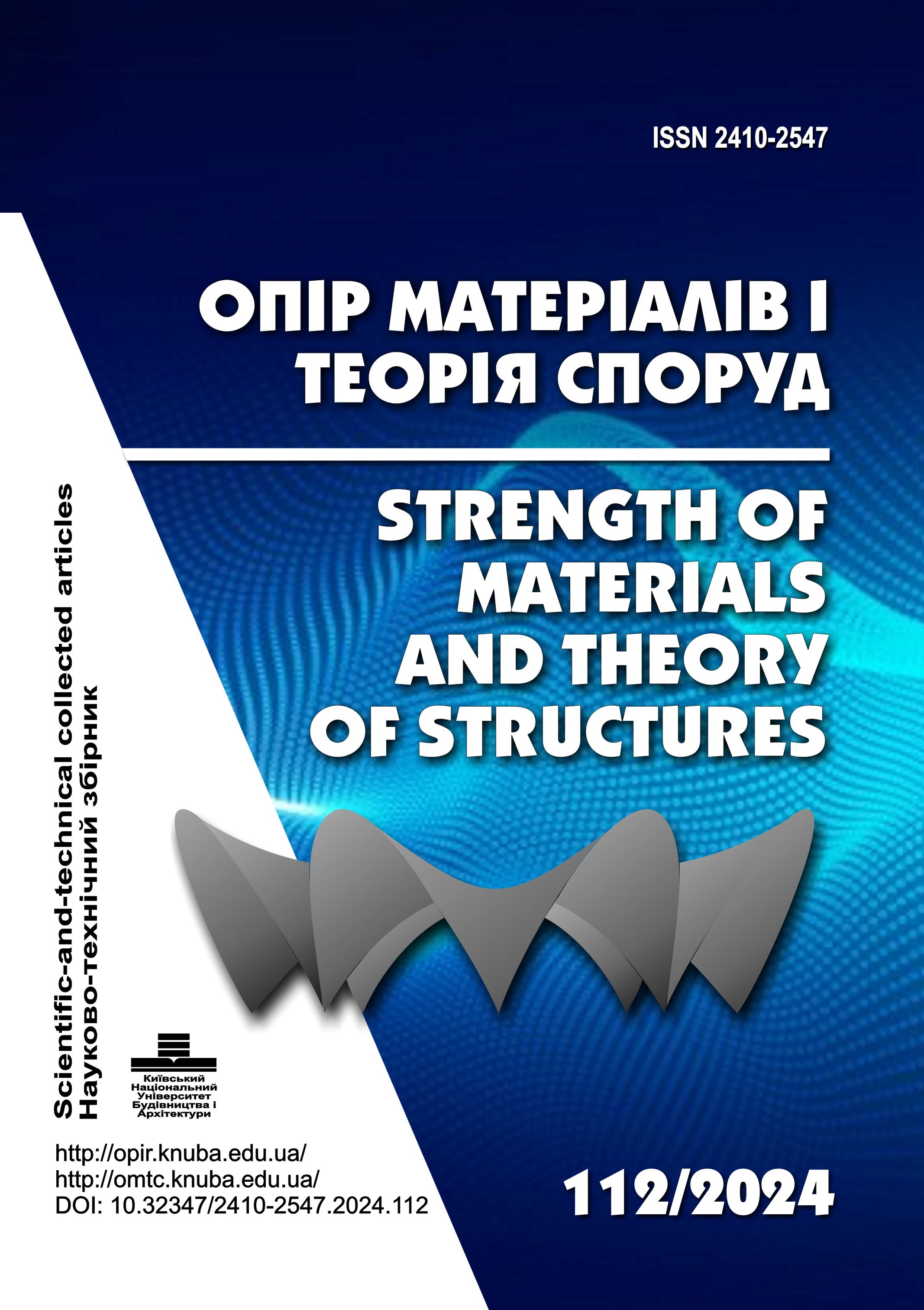Research of stochastic stability of constructions parametric vibrations by the Monte-Carlo method
DOI:
https://doi.org/10.32347/2410-2547.2024.112.327-331Keywords:
random parametric loading, stochastic stability, Monte Carlo method, finite element method, Runge-Kutta method, elastic systems, I-beam with corrugated wallAbstract
The stochastic parametric vibrations of the elastic systems behave to the statistical dynamics section of the nonlinear systems. Under stochastic parametric influence the vibrations of the elastic systems, which is a random process more frequent are not stabilized, but their amplitudes are fading or unlimited are growing. Therefore important is stability of stochastic vibrations, which can be examined as stability by probability, on average or by the moment functions of different orders. The mathematical models which describe the stochastic parametric vibrations of the elastic systems are building by analytical or numeral approaches. Researches of stochastic stability of parametric vibrations are executing by probabilistic methods. Stability of parametric vibrations of modern constructions under the action of operating random loads are not enough investigated.
In the article the numeral method of research of dynamic stability of the elastic systems under stochastic parametric influence was presented. The mathematical model of stochastic parametric vibrations of construction in the form of a reduсed finite element model was formed. Matrixes of the reduced model were obtained using calculated procedures of finite element analysis software NASTRAN. The dynamic loading as stationary ergodic random process with the spectral density was presented in the form of a finite amount of harmonic functions. Stochastic stability of the constructions was investigated using the Monte Carlo method and the Runge Kutta method of direct numeral integration of the equations of reduсed model. Stochastic stability as stability by probability of appearance of tendency to fading or unlimited growth of amplitude of parametric vibrations was examined during the time interval in space of the random parameters of loading. Dynamic stability of a I-beam with corrugated wall under narrow-band parametric influence was investigated using the numeral method.
References
Vibratsii v tekhnike: Spravochnik. V 6-ti t. − Т. 1. Kolebania lineinyh sistem [Linear Systems Vibrations] / Pod red. V.V. Bolotina. M.: Mashinostroenie, 1978 .− 352 s. (rus)
Augusti G, Baratta A., Casciati F. Probabilistic Methods in Structural Engineering. − London New York. Chapman and Hall, 1984. − 547 p.
Poshyvach D.V. Chyselynyi analiz dynamichnoi stiikosti kruhovoi tsylindrychnoi obolonky pry vypadkovomu parametrychnomy zbudzhenni [Numerical analysis of the dynamic stability of a circular cylindrical shell under random parametrical excitation] // Strength of Materials and Theory of Structures: Scientificand-technical collected articles. − K.: KNUBA, 2002. − Issue 71. − P. 115-124. (ukr)
Gotsulyak Е.А., Dekhtyaruk Е.S., Lukianchenko О.О., Borysenko V.G. Metodyka redukuvannia rivnian v zadachakh parametrychnykh kolyvan konstruktsii [Method of redicing equations in the problems of structures parametric oscillations] // Strength of Materials and Theory of Structures: Scientificand-technical collected articles. − K.: KNUBA, 2004. − Issue 74. − P. 24-34. (ukr)
Goncharenko M.V., Poshyvach D.V. Doslidzhennia umov dynamichnoi stiykosti pruzhnykh system pry stohastychnomu parametrychnomu vplyvi [Study of the conditions of dynamic stability of elastic system under random parametrical influence] // Vibratsii v tekhnitci ta tekhnologiiakh, 2006. №2 (44). S.14-19. (ukr)
Bazhenov V.A., Lukianchenko O.О., Kostina E.V. Kolyvannia parametrychno zbudzhenykh pruzhnykh sterzhnevykh system [Oscillations of parametrically excited elastic rod systems. − K.: Karavela, 2021. – 154 s. (ukr)
Jaecheol Koh Siemens NX Nastran: Tutorials for Beginners and Advanced Users. ASIN: B0B19ZBZCM, 2022. – 566 p.
Downloads
Published
Issue
Section
License

This work is licensed under a Creative Commons Attribution 4.0 International License.
Authors retain copyright and grant the journal right of first publication with the work simultaneously licensed under a Creative Commons Attribution License that allows others to share the work with an acknowledgement of the work's authorship and initial publication in this journal.

